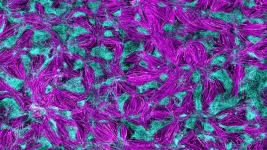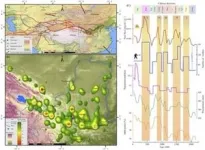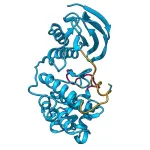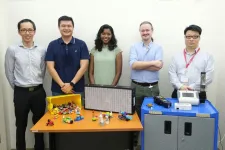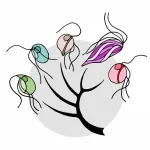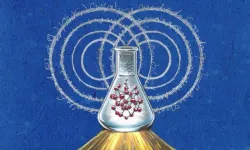(Press-News.org) Scientists have so far identified around 800 different neuromuscular diseases. These conditions are caused by problems in the way muscle cells, motor neurons and peripheral cells interact. These disorders, including amyotrophic lateral sclerosis and spinal muscular atrophy, lead to muscle weakness, paralysis, and in some cases death.
“These diseases are highly complex, and the causes of the dysfunction can vary widely,” says Dr. Mina Gouti, head of the Stem Cell Modeling of Development and Disease Lab at the Max Delbrück Center. The problem might lie with the neurons, the muscle cells or the connections between the two. “To better understand the causes and find effective therapies, we need human-specific cell culture models where we can study how motor neurons in the spinal cord interact with the muscle cells.”
Organoids are too large for high-throughput studies
The researchers working with Gouti had already developed a three-dimensional neuromuscular organoid (NMO) system. “One of our goals is to use our cultures for large-scale drug testing,” says Gouti. “The three-dimensional organoids are very large and can’t be grown for a long time in the 96 well culture dish that we use to perform high-throughput drug screening studies.”
For this type of screening, an international team led by Gouti has now developed a self-organizing neuromuscular junction model using pluripotent stem cells. The model contains neurons, muscle cells, and the chemical synapse named neuromuscular junction that is needed for the two types of cells to interact. The researchers have now published their findings in Nature Communications. “The 2D self-organizing neuromuscular junction model will allow us to perform high throughput drug screening for different neuromuscular diseases and then study the most promising candidates in patient-specific organoids,” says Gouti.
To establish the 2D self-organizing neuromuscular junction model, the researchers first had to understand how motor neurons and muscle cells develop in the embryo. Minas' team does not conduct embryonic research themselves but utilizes various human stem cell lines, which are allowed for research purposes under strict guidelines, as well as an induced pluripotent stem cell line (iPSC). “We tested a number of hypotheses. We found that the types of cells we needed for functional neuromuscular connections originated from neuromesodermal progenitor cells,” says Alessia Urzi, a doctoral student and lead author of the paper. Urzi found the right combination of signaling molecules that cause human stem cells to mature into functional motor neurons and muscle cells with the necessary connections between the two. “It was exciting to see the muscle cells contracting under the microscope,” says Urzi. “That was a clear sign we were on the right track.” Another observation was that, once differentiated, the cells organized themselves into areas with muscle cells and nerve cells, rather like a mosaic.
An optogenetic switch for motor neurons
The muscle cells grown in the culture dish contract spontaneously as a result of their connection to the neurons – but they do so without any meaningful rhythm. Urzi and Gouti wanted to fix that. Working with researchers at Charité – Universitätsmedizin Berlin, they used optogenetics to activate the motor neurons. Activated by a flash of light, the neurons fire and cause the muscle cells to contract in sync, moving them closer to mimicking the physiological situation in an organism.
Modeling Spinal muscular atrophy in the dish
To test the validity of the model, Urzi used human iPSCs from patients with Spinal muscular atrophy, a severe neuromuscular disease that affects children in the first year of their life. The neuromuscular cultures generated from the patient-specific induced pluripotent stem cells showed severe problems with the contraction of the muscle resembling the patient’s pathology.
For Gouti, the 2D and 3D cultures are key tools for researching neuromuscular diseases in greater detail and to test more efficient and individualized treatment options. As a next step, Gouti and her team want to perform high throughput drug screening to identify novel treatments for patients with spinal muscular atrophy and amyotrophic lateral sclerosis. “We want to start by seeing if we can achieve more successful outcomes using new combinations of drugs to improve the life of patients with complex neuromuscular diseases,” says Gouti.
Further information
Portrait of Mina Gouti
Neuromuscular organoid: It’s contracting!
Mina Gouti’s lab
Literature
Alessia Urzi et al. (2023): “Efficient generation of a self-organizing neuromuscular junction model from human pluripotent stem cells”, Nature Communications, DOI: 10.1038/s41467-023-43781-3
Media to download
Picture: A human self-organizing 2D neuromuscular junction model. Immunofluorescence analysis of the whole dish shows muscle cells (magenta) organized in bundles surrounded by spinal cord neurons (cyan). Credit: Alessia Urzi, Max Delbrück Center
Video: A human self-organizing 2D neuromuscular junction model from human pluripotent stem cells. Credit: Gouti Lab, Max Delbrück Center
Contacts
Dr. Mina Gouti
Head of the Stem Cell Modeling of Development and Disease Lab
Max Delbrück Center
+49 (0)30 9406-2610
Mina.Gouti@mdc-berlin.de
Christina Anders
Editor, Communications Department
Max Delbrück Center
+49-(0)30-9406-2118
christina.anders@mdc-berlin.de or presse@mdc-berlin.de
Max Delbrück Center
The Max Delbrück Center for Molecular Medicine in the Helmholtz Association (Max Delbrück Center) is one of the world’s leading biomedical research institutions. Max Delbrück, a Berlin native, was a Nobel laureate and one of the founders of molecular biology. At the locations in Berlin-Buch and Mitte, researchers from some 70 countries study human biology – investigating the foundations of life from its most elementary building blocks to systems-wide mechanisms. By understanding what regulates or disrupts the dynamic equilibrium of a cell, an organ, or the entire body, we can prevent diseases, diagnose them earlier, and stop their progression with tailored therapies. Patients should be able to benefit as soon as possible from basic research discoveries. This is why the Max Delbrück Center supports spin-off creation and participates in collaborative networks. It works in close partnership with Charité – Universitätsmedizin Berlin in the jointly-run Experimental and Clinical Research Center (ECRC), the Berlin Institute of Health (BIH) at Charité, and the German Center for Cardiovascular Research (DZHK). Founded in 1992, the Max Delbrück Center today employs 1,800 people and is 90 percent funded by the German federal government and 10 percent by the State of Berlin.
END
A neuromuscular model for drug development
2023-12-19
ELSE PRESS RELEASES FROM THIS DATE:
Chilean researchers pledge for transformative change to tackle climate action
2023-12-19
Addressing climate change has become a central issue in Chile’s public policy. As part of that debate, Dr. Maisa Rojas, researcher in Atmospheric Physics, who currently serves as Chilean Minister for Environment and Marco Billi of the Centre for Climate and Resilience Research, Universidad de Chile, propose a new model of governance at the country level to facilitate the changes needed. The proposal – written before Dr. Rojas’ appointment to the Chilean government – is published in IOP Publishing’s journal Environmental Research Letters.
The model proposed places climate action ...
A new inactive form of p38a protein discovered
2023-12-19
p38a protein, which is associated with cancer and other diseases, adopts a previously unknown structure regulated by cellular redox conditions.
The finding may have implications when designing new drugs to block it.
The work developed by IRB Barcelona, in collaboration with the University of Barcelona and the company Nostrum Biodiscovery, has been published in the journal Nature Communications.
Barcelona, 19 December 2023 - p38a protein, a key enzyme in the regulation of various cellular functions, plays a crucial ...
Childhood trauma increases risk of chronic pain in adulthood, research to-date highlights
2023-12-19
Physical, sexual, or emotional abuse, or neglect, either alone or combined with other types of childhood trauma, increases the risk of chronic pain and related disability in adulthood, according to new research.
These new findings underscore the urgency of addressing adverse childhood experiences (ACEs) – potentially traumatic events that occur before 18 years of age – and taking steps to mitigate their long-term impact on people’s health.
The study ...
Pandas active posters on social media
2023-12-19
Pandas, long portrayed as solitary beasts, do hang with family and friends – and they’re big users of social media. Scent-marking trees serve as a panda version of Facebook.
An article in the international journal Ursus paints a new lifestyle picture of the beloved bears in China’s Wolong Nature Reserve, a life that’s shielded from human eyes because they’re shy, rare, and live in densely forested, remote areas. No one really knows how pandas hang, but a new study indicates pandas are around others ...
Air pollutants commonly found indoors could have an impact on creativity, NTU Singapore scientists find
2023-12-19
Air quality in the office may affect our level of creativity at work, scientists at Nanyang Technological University, Singapore (NTU Singapore) have found.
Working with the global air filter manufacturer Camfil on a shared research project, the NTU Singapore scientists found in a study that high levels of volatile organic compounds – gases released from products such as detergents, pesticides, perfumes, aerosol sprays and paint – affected the study participants’ creativity when they were asked to build 3D models with LEGO bricks.
Using a statistical analysis, the NTU team estimated that reducing total ...
Lexical simplification via single-word generation
2023-12-19
Lexical simplification (LS) aims to simplify a sentence by replacing complex words with simpler words without changing the meaning of the sentence,which can facilitate comprehension of the text for people with non-native speakers and children. Traditional LS methods utilize linguistic databases or word embedding models to extract synonyms or high-similar words for the complex word, and then sort them based on their appropriateness in context.
Recently, BERT-based LS methods entirely or partially mask ...
Single-celled protists in the guts of animals thrive without the ‘powerhouse of the cell’
2023-12-19
Almost all eukaryotic organisms, from plants and animals to fungi, can’t survive without mitochondria – the “powerhouses of the cell,” which generate chemical energy using oxygen. However, a new study by Lukáš Novák and Vladimír Hampl of Charles University, published in the journal PLOS Genetics, finds that multiple members of the oxymonads, a group of single-celled protists that live inside the guts of termites and other animals, have evolved to live quite happily without them.
Many groups of protists have evolved simplified mitochondria, but for a long time, scientists ...
Patients’ creative ideas can inform a healthcare organization’s learning and innovation
2023-12-19
December 19, 2023--Routinely collected patient experience surveys provide an opportunity for patients to share their creative ideas for improvement, according to a new study at Columbia University Mailman School of Public Health. Researchers in Health Policy and Management developed and assessed a methodological strategy that validates questions designed to elicit creative ideas from patients. Until now the pace of translating patient insights into innovation has been slow and its effectiveness inadequate. The findings are ...
SLAC and its partners release a free, easy-to-use platform for understanding and managing electric grids
2023-12-19
The Department of Energy’s SLAC National Accelerator Laboratory and its partners at Hitachi America Energy Solutions Laboratory have released a new open-source software platform for simulating how all the parts of an electric grid work together, along with a graphic interface that makes it much easier for users to understand and apply the results.
Together, these two tools can help utilities harden their distribution systems against extreme weather and wildfires, integrate renewable energy sources like wind and solar into electric grids and set the rates they charge customers, among other things.
The grid ...
New strategy reveals ‘full chemical complexity’ of quantum decoherence
2023-12-19
In quantum mechanics, particles can exist in multiple states at the same time, defying the logic of everyday experiences. This property, known as quantum superposition, is the basis for emerging quantum technologies that promise to transform computing, communication, and sensing. But quantum superpositions face a significant challenge: quantum decoherence. During this process, the delicate superposition of quantum states breaks down when interacting with its surrounding environment.
To unlock the power of chemistry ...
